From grand landscapes to cottage gardens where rose heads hang heavy in full bloom and wildflowers here’s our pick of our favourite British summer gardens…
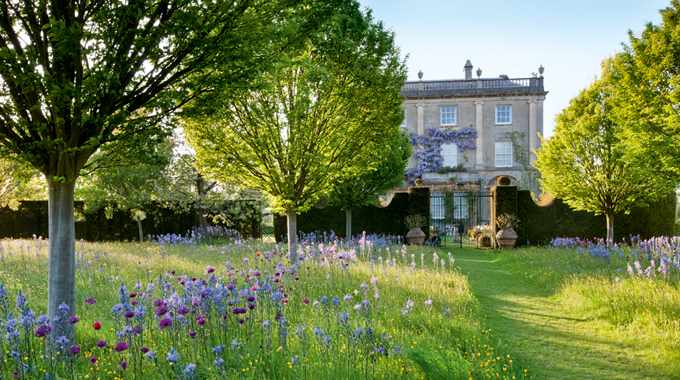
There is a diversity of garden styles in Britain that is unmatched anywhere in the world. It’s partly due to climate and geography but mainly a gradual progression, according to the peculiar and particular tastes of the time and the inclination of the nation’s often idiosyncratic owners and gardeners. From the cottage gardens of the populace to the landscaped sweeps of the aristocracy, the best British summer gardens have developed in many styles.
Our favourite British summer gardens
Highgrove Gardens, Gloucestershire
The new hot favourite style for British summer gardens is the Wildflower Meadow Garden, which grew from the concept of caring for the environment and its wildlife in particular, from birds to butterflies and worms to wasps. The movement started at the top, with His Majesty The King who, bucking the trend 30 years ago and incurring no small scorn, announced he would ensure his garden at Highgrove in Gloucestershire was completely organic.
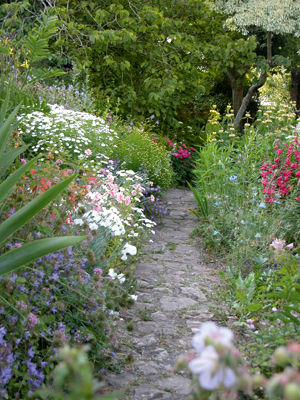
Highgrove is a garden of many parts, but it is the wildflower meadow with some 32 species of endangered wild plants, from orchid to ox-eye daisies, that has won the Prince the most admiration for preserving the nation’s native flora, and seed from the meadow is now a popular buy at the Highgrove shop.
Kailzie, Scottish Borders
The large gardens (25 acres) at Kailzie near Peebles 215m (700ft) up on the Scottish Borders include a wild garden – at its best in spring – and a wonderful range of wild birds, as the River Tweed and its burn that rush through the garden provide excellent habitats for kingfishers, herons, oyster catchers, wagtails and dippers. This is one of the few places in Britain to see red squirrels and osprey.
Sticky Wicket, Dorset
Sticky Wicket in Dorset amazes with its sheer flower power. Pam Lewis has created a plant colour wheel that encircles the house, moving from vibrant lime-greens and yellows to soft pinks and blues. The insect-friendly White Garden blends into a meadow revealing a tapestry of colour, then meets the Round Garden with spreads of low-growing nectar-rich plants for insects, butterflies and bees. The mixed fragrance of camomile and thyme assails the nostrils and on a hot summer’s day, the hum of a thousand nectar-seeking insects can be heard. Roses have always been essential in British summer gardens, developing from a simple hedgerow flower to a sophisticated many-petalled bloom.
Mottisfont Abbey, Hampshire

Mottisfont Abbey in Hamsphire is one of the best British summer gardens for a serious fragrance thrill. Mottisfont was an Augustinian priory in 1201, then after the Dissolution of the Monasteries in 1536, Henry VIII gave the estate to his Lord Chamberlain, who turned it into a grand Tudor manor. It was not until after the National Trust took it over in 1957, that the roses arrived in the walled garden, when the great rosarian and plantsman Graham Stuart Thomas filled the then derelict walled garden with his own collection of historic gallicas, damasks, centifolias, albas and moss roses. Today, these arching old roses tumble through the herbaceous borders as a major June highlight.
Borde Hill, West Sussex
The Rose Garden at Borde Hill is packed with 85 varieties of David Austin’s perfumed English Roses, thanks to the inspiration of owners Andrew John and Eleni Stephenson Clarke who scoured old records for pictures of the garden from its Victorian and Edwardian heyday. The beds of roses, in hues of pink, white and magenta, are edged with lavender and nepeta to add to the fragrance.
RHS Rosemoor, North Devon

RHS Rosemoor in North Devon is at the western end of the comfort zone for roses with all that moisture in the very clean air, but, having got the drainage sorted, the rose garden there is a sight to behold, with its planting of 2,000 roses in 200 cultivars in every form and fragrance. A temperate climate, great plant hunters and possibly global warming allow for many species to be grown that previous generations may not have dreamed of.
Tresco Abbey Gardens
Visiting the sub-tropical Scilly Isles is a journey to another land. Thirty miles south of Land’s End, the normally rocky landscape of Tresco Abbey Gardens is swathed in giant agaves, aeoniums and succulents. Seen from offshore in a boat, the tall palms fill the skyline giving it a magical ‘other world’ feel. It has the mildest of climates and the boast is “there is no winter, just an extended autumn” allowing exotic plants originating from Brazil to Burma to thrive.
Inverewe, Ross-shire
Location is all for British summer gardens. Despite its northerly situation, beyond the Isle of Skye and the same latitude as St Petersburg, Inverewe, an enormous (54-acre) loch-side Highlands garden in Ross-shire, boasts a wealth of tropical treasures. Being on the wet, west coast of Scotland with its Gulf Stream influence helps. The sloping walled garden mixes traditional roses with vegetables and herbaceous plants and has the bonus of spectacular views across the sea loch. The garden was created in the late 19th century by local laird, Osgood Mackenzie, who had a passion for exotics from America, New Zealand and China. After his daughter Mairi’s death in 1953, the National Trust for Scotland took over the garden and has continued the theme.
Abbotsbury, Dorset
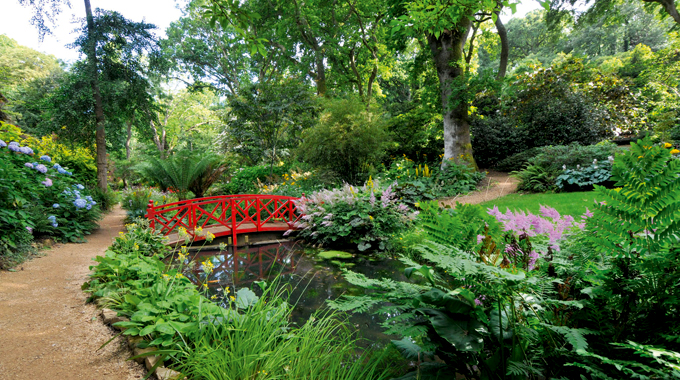
Abbotsbury in Dorset shows how a sub-tropical garden can be conjured up with mild sea influences and a modicum of shelter from northern winds. Established in 1765 as a kitchen garden for a now demolished castle, the garden has been greatly replanted over the past two decades and its reward has been receiving the Christies/Historic Houses Association Garden of the Year award for 2012.
Stourhead, Wiltshire
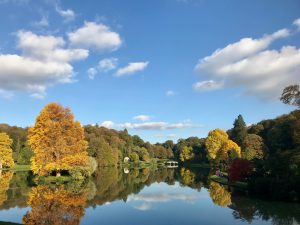
Grand estates there have always been, and grand gardens to go with them, many taking their influence from Europe, but in the 18th century the landscape movement swept all formality away – changing the look of the British countryside. Of all English landscape gardens, Stourhead in Wiltshire, created between 1741 and 1780, is among the most poetic – inspiring to walk around in all seasons, even winter. Owner and creator Henry Hoare took inspiration from the classical scene and his travels in Italy, and the garden unfolds as a sequence of views framed like pictures along a winding route. Classical temples seen in the distance across the lake, disappear from view as you walk and are later seen from another angle. You can enter the fabulously decorated grotto and look out on a level with the lake.
Rousham, Oxfordshire
Magical Rousham in Oxfordshire has barely changed since William Kent designed it in the 1730s and, compared with other landscape gardens, it’s small enough that visiting makes for an intimate experience. Follow the atmospheric route through trees, past wonderful garden buildings, then visit the Walled Garden for a feast of colour.
Stowe, Buckinghamshire
For history and superb garden buildings, you can’t do better than magnificent Stowe in Buckinghamshire. Stowe was ‘the’ influential landscape garden of the 18th century, worked on by Bridgeman, Kent and ‘Capability’ Brown. Idyllic landscape scenes conceal owner Viscount Cobham’s jaundiced commentary on the politics of the time.
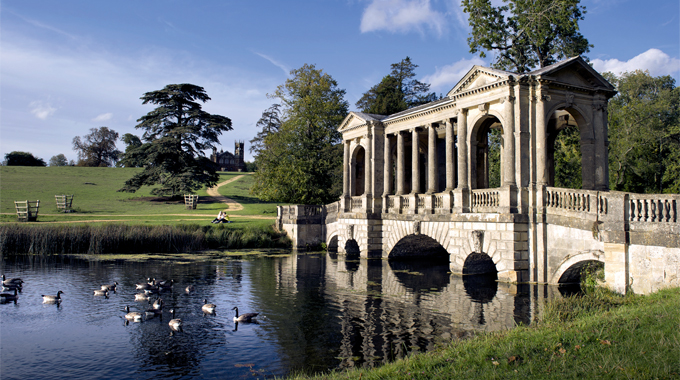
Levens Hall, Cumbria
The ancient practice of pruning and clipping trees into ornamental shapes saw a revival in Europe in the 16th century, and topiary became a runaway garden fashion, and a very obvious display of wealth and grandeur. The gardens at Levens Hall in Cumbria are famous for their outsized yew topiaries, the oldest in the world it’s said, and often described as looking like something from Alice in Wonderland. They date back to the 1690s when the garden was first planted, and have outgrown their shapes over the years to become magnificent giants.
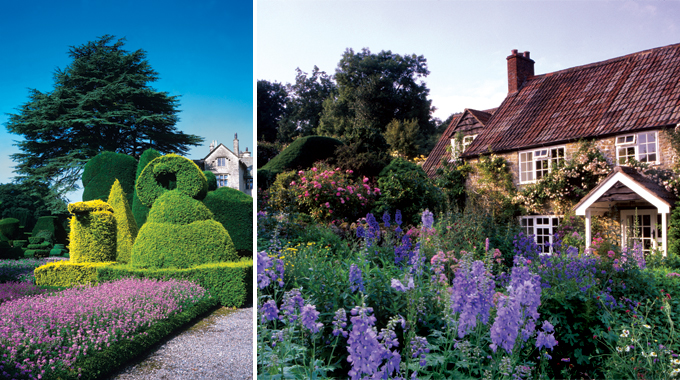
Packwood House, Warwickshire
Wonderful Packwood House in Warwickshire dates back to Tudor times and tradition has it the topiary yews there were planted to represent the Sermon on the Mount. Over 100 trees, some more than 15m (50ft plus), lead to a mound crowned with a single tree, the Master. In addition, there are fine herbaceous borders and Tudor-period courtyards.
For an opportunity to see box and yew topiary of a more manageable size, you can visit topiary specialists Langley Boxwood Nursery in Hampshire where there is a wide range of ready-clipped shapes and sizes, from balls and cones to spirals and obelisks.
The Arts and Crafts period in the 1900s was important for architecture, art and culture and much of that spilled over into the gardens. A style of gardening developed, led by Edwin Lutyens and Gertrude Jekyll.
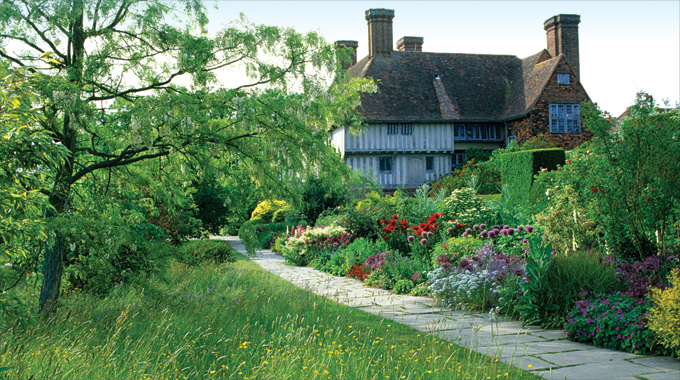
Great Dixter, East Sussex
The garden that epitomises the period is undoubtedly Great Dixter in East Sussex, which for many sets the standard for all. The 15th century house was restored by Lutyens and the garden designed by him but given the distinctive stamp of its brilliant owner Christopher Lloyd. This is a garden for all seasons and all tastes, from a sunken garden to wildflower meadows, exotic areas to deep herbaceous borders – it sums up the period and yet is beautifully timeless.
High Glanau, Wye Valley
High Glanau is situated on the slopes of the Wye Valley in Gwent and seen as the finest of the Arts and Crafts period in Wales. Built in 1922 for H Avray Tipping, the then architectural editor of Country Life magazine who established the garden. His plans are the basis of the thoughtful garden update by owners Helena and Hilary Gerrish that features a subtle colour palette of white, lavender, blue and green threading through deep, straight 30m-long (100ft) borders.
As life improved over the centuries for the general population, the utilitarian cottage garden evolved with the luxury of growing some pretty flowers among the essential vegetables, until the 19th century it had come to embody the quintessential country look. The art of cottage-garden planting lies in combining plants naturally, and no one did this more skilfully than plantswoman and writer Margery Fish in the archetypal cottage garden she made at East Lambrook Manor in the 1950s.
Everywhere around the little 15th-century manor house is a sense of relaxed abundance, with mixed borders, old roses, euphorbias and important collections of snowdrops, hellebores and hardy geraniums. There is also a nursery specialising in rare and unusual plants.
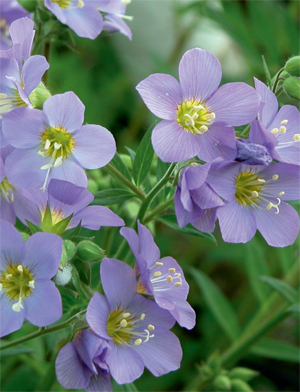
Monks House, East Sussex
In 1919, Bloomsbury writer Virginia Woolf and her husband Leonard bought Monks House in East Sussex as a refuge from London, and it’s easy to see why. The secluded and tranquil garden remains as it was in their day, with a neat lawn, old trees, informal mixed planting, and a vegetable garden. At the end of the garden is the little building Virginia used as her writing room. New influences in gardening are emerging, and some wonderful contemporary gardens have been created in recent years, made by innovative garden owners and designers.
Broughton Grange, Oxfordshire
To see contemporary planting on a grand scale, visit Broughton Grange, where the Walled Garden is the setting for garden designer Tom Stuart-Smith’s bold design. Key structural features are a modern stone rill and central pool, but it’s the perennial plants that hold the stage, with an ever-changing display of colours and textures. Tall forms and topiary emerge from a carpet of ground colour, airy grasses and sturdy foliage. The garden is laid out over three descending terraces with open views to the countryside.
Scampston Hall, North Yorkshire
The old Walled Garden at Scampston Hall was given a new and dramatic layout by designer Piet Oudolf and opened to the public in 2004. A series of ‘rooms’ within the space features sculptural serpentine yew hedges, big drift-waves of ornamental grasses, topiary and a bee and butterfly-friendly perennial meadow.
Read more:





 © 2024
© 2024